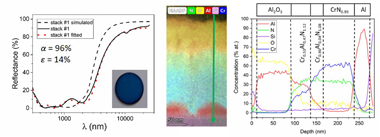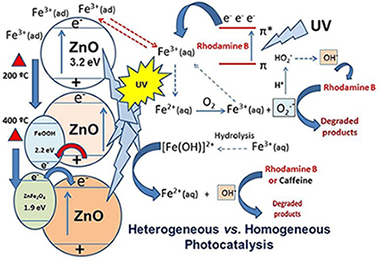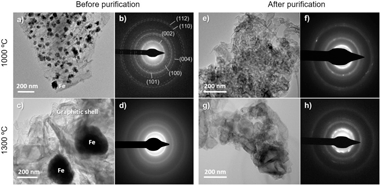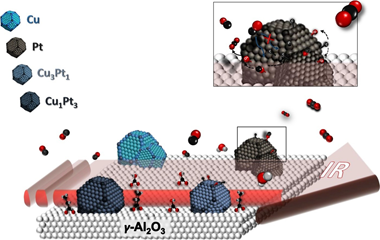Artículos SCI
2020
2020
Tribología y Protección de Superficies
High-temperature solar-selective coatings based on Cr(Al)N. Part 2: Design, spectral properties and thermal stability of multilayer stacks
Rojas, TC; Caro, A; Escobar-Galindo, R; Sanchez-Lopez, JCSolar Energy Materials and Solar Cells, 218 (2020) 110812
Show abstract ▽

Two multilayer solar selective absorber coatings [Al/CrN0.95/Cr0.96Al0.04N1.08/Cr0.53Al0.47N1.12/Al2O3 (stack #1) and Cr0.96Al0.04N0.89/Cr0.62Al0.38N1.00/Cr0.53Al0.47N1.12/Al2O3 (stack #2)] were deposited on 316L steel by combining direct current (DC) and high power impulse magnetron sputtering (HiPIMS) technologies with the aim of increasing the working limit temperature. The composition and thickness of the constituent layers were optimized using CODE software to achieve a high solar absorptance (alpha) and low values of thermal emittance (epsilon) in the infrared region. The deposited multilayered stacks were heated during 2 h in air at 600, 700 and 800 degrees C to study their thermal stability and optical performance. Compositional, structural and optical characterization of the stacks (as-prepared and after thermal treatment) was performed. Both stacks presented a good solar selectivity with alpha > 95% and epsilon < 15%, were stable up to 600 degrees C and fulfilled the performance criterion PC < 5% after 600 and 700 degrees C treatments. Despite the stacks suffered chemical transformations above 600 degrees C, partial oxidation (stack #1) and Cr2N formation (stack #1 and #2), the optical properties were optimum up to 700 degrees C for stack #1 (alpha = 94%, epsilon((25 degrees C)) = 12%) and 600 degrees C for stack #2 (alpha = 93%, epsilon((25 degrees C)) = 13%). The solar-to-mechanical energy conversion efficiencies (eta) of the as-deposited and annealed (600 and 700 degrees C) samples were up to 20% points higher than the absorber paint commercially used (Pyromark). At 800 degrees C, they underwent a further structural transformation, provoked by the oxidation of the inner layers, and they consequently lost their solar selectivity.
Diciembre, 2020 | DOI: 10.1016/j.solmat.2020.110812
Materiales de Diseño para la Energía y Medioambiente
New biomorphic filters to face upcoming particulate emissions policies: A review of the FIL-BIO-DIESEL project
Orihuela, MP; Chacartegui, R; Martinez-Fernandez, JEnergy, 201 (2020) 117577
Show abstract ▽
With a high number of diesel vehicles worldwide, particulate emission control is an urgent issue with a global impact, from the health of citizens to commercial future of this technology in some transport segments. Particulate filters are widely used in automotive engines to comply emissions regulations, but current technologies have room for improvement as they add additional backpressure in the exhaust system, and efficient on-board regeneration process is challenging.
The Fil-Bio-Diesel Project is a R&D initiative to improve current particle filtration systems, based on the development of novel biomorphic substrates. By replicating the biologic tissue of a wood precursor, a biomorphic silicon carbide with hierarchic orthotropic microstructure can be produced. The porosity, the pore size, and pore orientation of this bioceramic material can be tailored through the selection of a suitable precursor, widening the initially narrow relationship between filtration efficiency and pressure drop that characterizes granular ceramic materials. In this paper the methodology and main results of the Fil-Bio-Diesel Project are presented. This work shows the peculiar advantages of biomorphic silicon carbide through several experimental studies. The results show the potential of this novel filter substrate to be used in future particulate abatement systems.
Junio, 2020 | DOI: 10.1016/j.energy.2020.117577
Fotocatálisis Heterogénea: Aplicaciones
Role of Fe(III) in aqueous solution or deposited on ZnO surface in the photoassisted degradation of rhodamine B and caffeine
Tanji, Karim; Navio, J A; Martin-Gomez, A N; Hidalgo, M C; Jaramillo-Paez, C; Naja, Jamal; Hassoune, Hicham; Kherbeche, AbdelhakChemosphere, 241 (2020) 125009
Show abstract ▽

Iron (III) was incorporated, to the surface of a synthesized ZnO, using two nominal molar percentages of Fe (III): 1% and 5% Fe relative to ZnO. Samples dried and calcined at 200 °C and 400 °C for 2 h, were characterized by XRD, XPS, XRF, N2-adsorption-BET and (UV–vis)-DRS. Photocatalytic activities of the catalysts were assessed based on the degradation of rhodamine B (RhB) and caffeine (CAF) in aqueous solution under two irradiation conditions: UV and visible light illumination. Prior to the photocatalytic tests, the interaction of each one of the substrates with either Fe(III) or Fe(II) was studied in homogeneous medium under UV-illumination and oxygenated environment. It was found that Fe (III) can play an important role in homogeneous media in the photoassisted degradation, both of rhodamine B and caffeine, while Fe (II) does not exert a relevant role in the photoassisted degradation of the referred substrates. Fe–ZnO samples display similar or poorer performance than pure ZnO in the presence of UV light for both studied substrates. The phenomenon can be attributed to the formation of either goethite or ZnFe2O4 at the ZnO surface where the coupled Fe3+/Fe2+ can act as recombination centers for the photogenerated charges. On the contrary, all Fe–ZnO samples showed enhanced photocatalytic activity under visible illumination which seems to be independent of the iron content. In this context, the mechanisms for photoassisted degradation of both the substrates in homogeneous medium and photocatalytic degradation are discussed, as well as the role of Fe in the photodegradation processes.
Febrero, 2020 | DOI: 10.1016/j.chemosphere.2019.125009
Materiales de Diseño para la Energía y Medioambiente
Binder-free supercapacitor electrodes: Optimization of monolithic graphitized carbons by reflux acid treatment
Gomez-Martin, A; Gutierrez-Pardo, A; Martinez-Fernandez, J; Ramirez-Rico, JFuel Processing Technology, 199 (2020) 106279
Show abstract ▽

The rational design of electrodes mimicking the cellular structure of natural bio-resources has been a matter of increasing interest for applications in energy storage. Due to their anisotropic and hierarchical porosity, monolithic carbon materials from natural wood precursors are appealing as electrodes for supercapacitor applications due to their interconnected channels, relatively low cost and environmentally friendly synthesis process. In this work, a liquid-phase oxidative treatment with refluxing nitric acid at 100 degrees C for 8 h was performed to enhance the surface properties of beech-derived graphitized carbons treated with an iron catalyst. Microstructural, textural and surface investigations revealed that this strategy was successful in removing amorphous carbon and in functionalizing their surfaces. The crystallinity, accessible surface area, micropore volume and surface functionality of beech-derived carbons were increased upon the reflux treatment. The resulting porous carbon materials were evaluated as binderless monolithic electrodes for supercapacitors applications in aqueous KOH electrolyte. A maximum specific capacitance of 179 F.g(-1) and a volumetric capacitance of 89 Fcm(-3) in galvanostatic charge/discharge experiments were reached. Monolithic electrodes exhibited good cycling stability, with a capacitance retention over 95% after 10,000 cycles.
Marzo, 2020 | DOI: 10.1016/j.fuproc.2019.106279
Química de Superficies y Catálisis
Upgrading the PtCu intermetallic compounds: The role of Pt and Cu in the alloy
Castillo, R; Garcia, ED; Santos, JL; Centeno, MA; Sarria, FR; Daturi, M; Odriozola, JACatalysis Today, 356 (2020) 390-398
Show abstract ▽

This work is devoted to the study of the role of both metals in the intermetallic PtxCuy/ γ Al2O3 catalysts commonly employed in CO-PROX reaction. Therefore, monometallic Pt and Cu based catalysts and PtCu intermetallic compound with different molar ratios (Pt3Cu1 and Pt1Cu3) supported catalysts were carefully synthesized and deeply characterized. Room temperature CO adsorptions by FTIR spectroscopy were carried out on the mono- and intermetallic catalysts being the monometallic catalyst determinant for the study. From the analysis of the nature of the platinum surface in Pt/ γ Al2O3, we have demonstrated that the role of Pt sites is based in the CO dissociation for the CO2 formation and also how the platinum surface is partially blocked by leftovers from the synthesis. Moreover, the study of the Cu/ γ Al2O3 and the bimetallic catalysts PtxCuy/ γ Al2O3 allowed elucidating the effect of the copper in the metallic site and support interphase as well as the role of copper in the hydrocarbon oxidation.
Octubre, 2020 | DOI: 10.1016/j.cattod.2019.11.026
- ‹ anterior
- 94 of 410
- siguiente ›
icms











